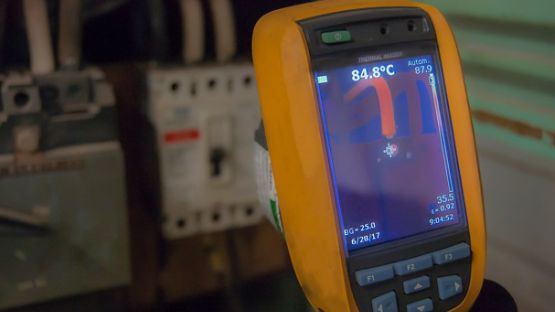To ensure that your business’s risk management plan and safety protocols are effective, your safety practices must seamlessly work in tandem with one another, which means engaging all of your employees in the process.
Develop a fire and safety plan
In addition to reducing the likelihood of an incident, establishing a comprehensive office safety plan that provides employees with clear direction on how to handle fire and emergency situations is vital. Your business’s fire and safety plan should include the following resources:
- Portable extinguishers with available instructions
- An outline of specific processes that can cause
- The location of safety equipment
- A list of combustible materials that are kept on site
- An outline of fire alarm procedures for all employees
- A listing of all lines of authority in the case of a fire
Establish an emergency preparedness plan
Develop and implement preparedness plan that addresses every conceivable occurrence that could impact your operations and employees. The plan should also outline the appropriate procedures employees should take in each circumstance. Though this may seem like an exhaustive exercise, once you have developed these responses, the plan will need to be updated only as potential circumstances change. You should include the following possible scenarios:
- External causes such as a utilities emergency
- Severe weather
- How an emergency in a nearby business could impact your business
Review and practise the emergency preparedness plan annually with your employees to ensure that everyone knows what to do in the event of an emergency. Be sure to also review it with new employees and any time you add new equipment or make changes to your facility that might affect the plan.
Practise preventative maintenance
Make scheduled equipment maintenance a key priority across all platforms and processes and ensure that all accompanying reports are accessible to all employees. These additional preventative measures can help in the maintenance process:
- Utilize thermographic scans to determine potential equipment failures
- Adopt maintenance management software such as Building Management Systems (BAS)
- Plan and initiate complete stoppages to perform thorough inspections and required maintenance
Develop an incident report form
All on-site emergencies, no matter how minor, must be documented and submitted in an incident report form so that this information will help prevent future occurrences. Ensure that all employees know the importance of prompt and accurate reporting. Your incident report form should clearly allow employees to make note of all circumstances surrounding an incident. The information in an incident report form may become vital if a workers’ compensation or insurance claim needs to be made.
Conduct ongoing employee safety training
All employees need to be well versed in your business’s safety protocols, and this information must be refreshed with employee safety training on a regular basis to ensure it is reflective of current procedures. In addition to ensuring that your staff is properly qualified and certified for the work they are performing, the following benefits are often overlooked:
- There are employees on each shift who are up-to-date with safety training, including first aid and CPR
- Regular inspection is conducted on all life safety systems, guards on equipment and mobile equipment
- Personal protection equipment (PPE) is worn at all times and meets the needs of the equipment being used
Institute office safety precautions
Ensure that your entire business meets safety protocols and is properly protected with a divisional approach. Break down your facility into sectors that include the shop floor, restricted access areas, administrative offices and exterior spaces. Enlist qualified staff and other expert resources to review these areas frequently to ensure safety compliance.
Evaluate your insurance coverage
Your insurance broker is a valuable source of information for identifying and mitigating risk within your entire operation. Contact your broker for additional information or for any questions you have about protecting your business with clear safety protocols and emergency preparedness plans. If you don’t have a broker, use our Find a Broker tool to find one in your area today. Engaging a broker’s services will also provide your insurance company with the critical information it needs to offer proper coverage options to ensure you have ample protection should an insured loss occur.
Sources
Health and Safety Orientation Guide for Employers. (2014, June). Retrieved from WorkSafe New Brunswick: http://www.worksafenb.ca/media/1227/worksafenborientationguide_e-1.pdf













